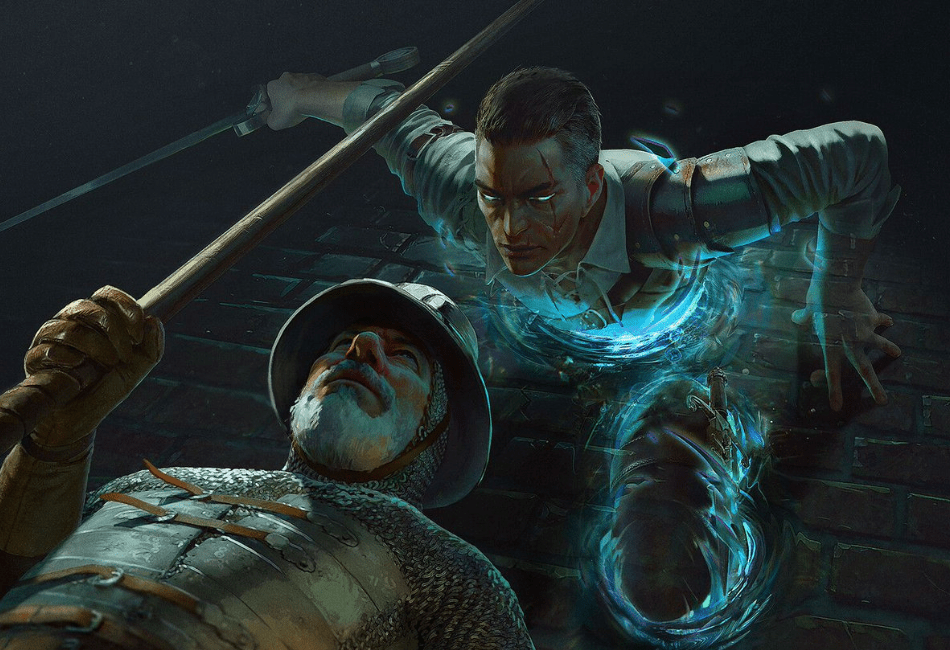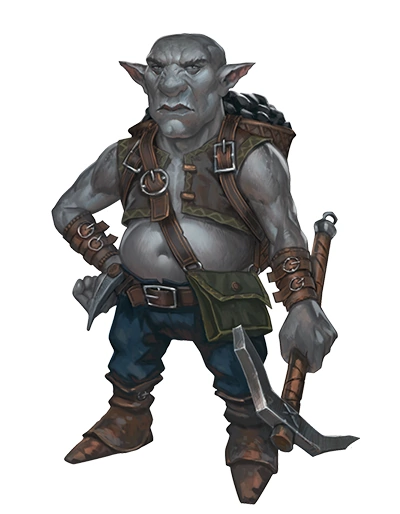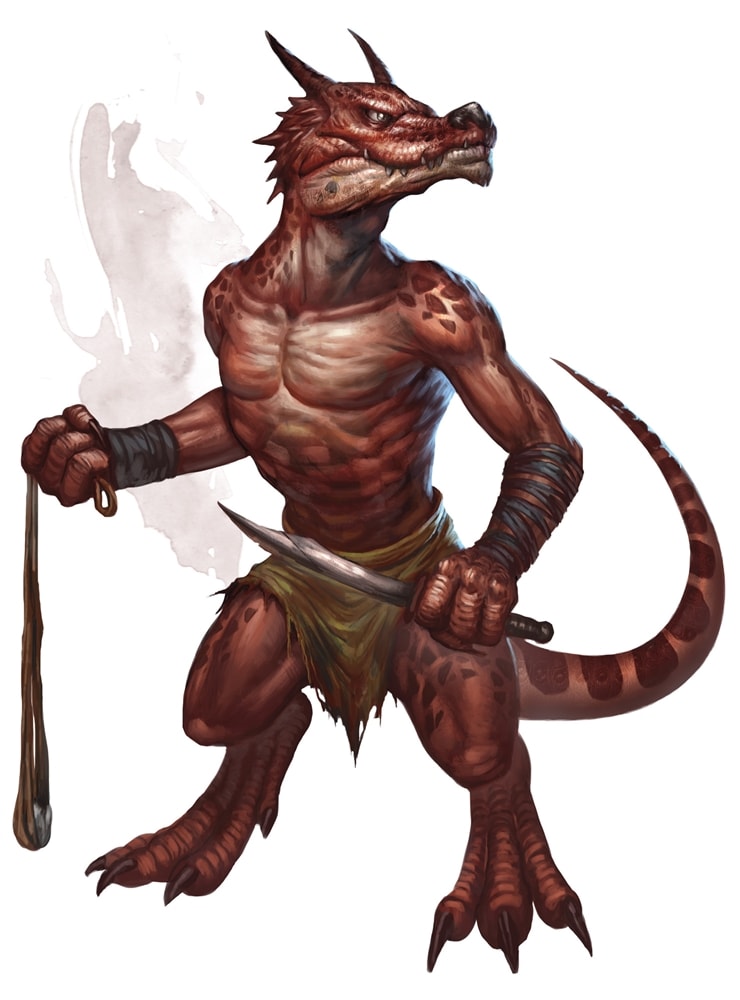The Rogue is an enjoyable striker class to play in D&D 5th Edition thanks to its extra damage dice, ability to sneak on and off the battlefield, and a slew of skill proficiencies that give them plenty of roleplaying opportunities well.
If you have played as a Rogue a few times or want to take on one of its more unique subclasses for your first time, the Phantom Rogue is an excellent Rogue subclass. Welcome to our Phantom Rogue 5e Guide.
Key Info Up Front
- Book: Tasha’s Cauldron of Everything
- Feature Levels: 3rd, 9th, 13th, 17th
- Role: Striker, Face, Scout
- Important Abilities: Dexterity, Constitution
- Hit Die: D8
Phantom Rogue Overview

The Phantom Rogue takes the standard Rogue class and mixes in unique mechanics through the character’s interactions with the dead. This gives the class a unique flavor and some fun mechanics that transform the Rogue and push players to adapt their playstyle accordingly.
However, some players find the Phantom Rogue a bit of a slow-burn that doesn’t find its stride until its level 9 feature. So, if you want to play it, you should either expect that or talk to your Dungeon Master ahead to see if they would be comfortable reworking the subclass a bit to make it find its footing earlier in the campaign.
Ability Scores
Like most Rogue subclasses, your priority Ability should be Dexterity. Getting your Dexterity as high as possible is paramount because it will increase your damage, your ability to sneak, and your AC score.
After your Dexterity, I recommend focusing on Constitution next. This will help you save throws against poisons or disease and ensure you can take a few hits without dying since you will be in the melee range for most combat encounters.
What you focus on next largely depends on the needs of your party. Intelligence is a good option if you want to play the role of information gatherer in your party, which is easier to do thanks to your generous skill proficiencies.
Wisdom is also helpful to help you detect traps, avoid getting surprised by enemies, and tell if NPCs are lying to you. Charisma can also be helpful if your party needs some help with a Face, which Rogues can do admirably if they are built for it correctly.
Regardless of the above three, I recommend always having Strength be your dump stat. You should be using weapons with the finesse trait, meaning you won’t need them for damage, and you won’t get any other benefits from investing points in them.
Backgrounds

When you pick a background for your Phantom Rogue, I recommend choosing one that makes the most sense with your character’s actual backstory.
This not only helps you flesh out your character’s story and personality more, but it can also help cut down on your many choices. If you want to ensure you don’t waste your background, some options work particularly well for Phantom Rogues.
Charlatan (Player’s Handbook)
The Charlatan is a solid option that gives you proficiency with two tool kits and two skills useful for Rogues.
I also like the Charlatan for the Phantom Rogue because it can naturally incorporate the subclass’ flavor, such as your character having mad money as a traveling psychic that helped people get closure after their loved ones passed. You can even obfuscate how much of what they did was real or fake.
Cloistered Scholar (Sword Coast Adventurer’s Guide)
This background can be useful if you’re looking for knowledge skill proficiencies such as Religion or History. It also gives you two more languages, helping you cover even more possible leads for your party throughout your adventures.
Courtier (Sword Coast Adventurer’s Guide)
This background can work very well with the Phantom Rogue, but only if you want to fill a Face role for your party. If you aren’t looking to handle the NPC interactions, you won’t get much from this background.
Criminal (Player’s Handbook)
This classic Rogue background comes with proficiency with two toolkits and two of the more critical Rogue skills, allowing you to focus on other options for your class skills. This background doesn’t fit as well with the flavor of the Phantom Rogue but still makes plenty of sense as all Rogues typically like stealing things.
Urchin (Player’s Handbook)
Another background gives you proficiency in two Rogue skills and a couple of tool kits. This background fits nearly every type of Rogue exceptionally well, but it does leave you figuring out how exactly your character started communing with the dead.
Skills
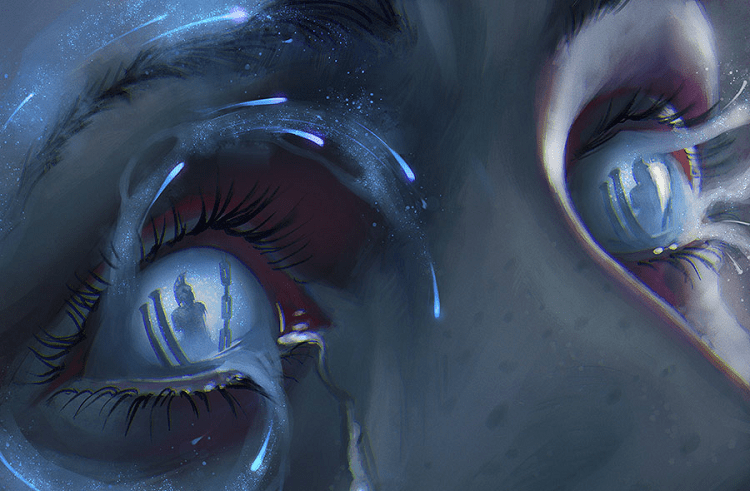
As a Rogue, you can pick a whopping four skill proficiencies out of a possible eleven. Which ones you pick will depend on your vision for your character and the background, but some options are more usable or better than their peers. Here are the skills available to the Rogue in the order that I think is the most useful.
- Stealth: Sneaking is a key part of playing any Rogue, and you’ll want proficiency to stay hidden.
- Perception: Perception is a huge plus for any character, but is especially so for a Rogue that may have to find traps, secret pathways or avoid being caught off guard at any given moment.
- Acrobatics: Acrobatics can be situational, but I find it very useful as a Rogue to help with climbing the environment and getting to hard-to-reach places both in and out of combat.
- Persuasion: Persuasion is only necessary if you plan on being your party’s Face, but if you do, it is an absolute must.
- Investigation: Investigation is a skill that is paramount for characters that will focus on gathering information, but it is helpful for all characters because it is used frequently.
- Insight: Insight is a valuable skill even if you aren’t the Face so that you can tell whether or not you are being lied to. It also feels particularly well-suited for the Charlatan, Urchin, and Criminal backgrounds.
- Deception: Deception is a Face skill you’re better off skipping if you don’t plan on doing much of the talking.
- Intimidation: Intimidation is similar to Deception.
- Sleight of Hand: Sleight of Hand being so low on this list probably feels weird for a Rogue. Being able to steal things sneakily makes sense for a Rogue, but it doesn’t come up very often unless your DM is running a campaign with a lot of stealing.
- Athletics: This is the worst skill to take as a Phantom Rogue since your Strength will likely be dumped anyway.
Phantom Rogue Features

Subclasses are all about their features, and the Phantom Rogue has some great ones. However, it doesn’t hit its stride until its feature at level nine, Tokens of the Departed.
If you start playing the Phantom Rogue and find it too slow or underpowered at early levels, I recommend talking to your Dungeon master about maybe getting that feature a bit early on, just with some small tweaks.
The tweaks I’ve found to work are saving the advantages it gives you for later while also moving the level three feature Wails From The Grave to level nine so that you don’t get everything right away at level three.
Whispers of the Dead
- Level: 3
This feature is a lot of fun and extremely useful. It allows you to take proficiency in a skill or tool with which you don’t already have proficiency at the end of any short or long rest by being taught by a spirit of the dead. The proficiency goes away when you use it to get proficiency in something else.
This feature is strong because it allows you to adjust your abilities for every situation, ensuring you’re never caught off guard and always have something to offer the rest of the party.
Wails from the Grave
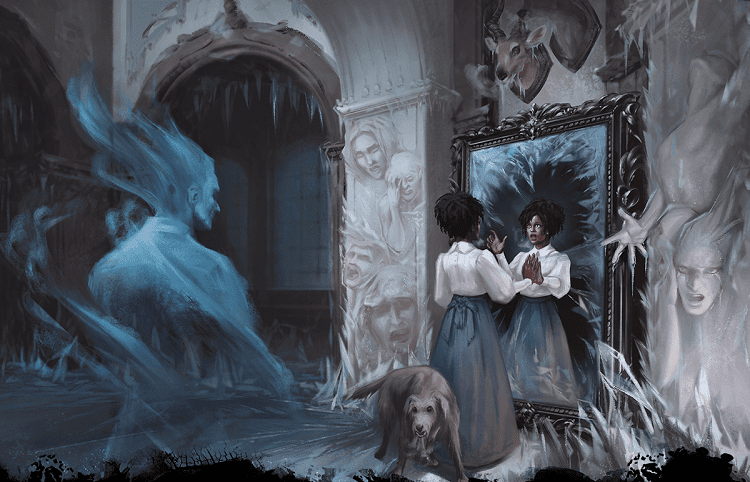
- Level: 3
Wails From The Grave allows you to call upon the dead around you to harm someone after using your sneak attack dice to damage someone else with necrotic damage. You can do this several times equal to your proficiency bonus per long rest, which can help you put up some serious damage numbers at higher levels.
To do so, when you hit a target with sneak attack damage, you can add half that number of dice onto another target within 30 feet of you. This feature does start slow but gets better once you start having more sneak attack dice.
Tokens of the Departed
- Level: 9
This feature is the very core of the Phantom Rogue. It allows you to capture the spirits of creatures that die around you in small objects called Soul Trinkets.
You can carry several trinkets equal to your proficiency bonus at a time, and they come with various benefits, starting with giving you advantage on death saves. Constitution saving throws just for having a trinket on you.
You can also expend the power of those trinkets to perform the following actions. The first is that when you perform a Sneak Attack, you can use a trinket to use Wail From The Grave once immediately for free.
You can also use an action to destroy a trinket, speak to the spirit held within, and ask it a question. When you do this, the spirit will answer you, but it has no obligation to be truthful and only knows as much as it did in life.
Capturing the spirit tokens can also make things more annoying for your dungeon master, so you should talk to them when you play this subclass. This is because you gain the spirit tokens when a creature fully dies, not just when it reaches 0 hit points, meaning that your DM will have to track death saving throws for every enemy you fight.
I recommend instead giving you the spirit tokens when a creature reaches 0 hit points, but making it only work on enemies with a CR above 0 so that you can’t exploit the feature.
Ghost Walk
- Level: 13
Ghost Walk allows you to partially pass into the spiritual realm to take a form similar to that of a ghost for ten minutes as a bonus action. While in this form, you move with a flight speed of 10 feet, you hover, and attacks have a disadvantage when made against you.
You can also pass through creatures and objects as if they are difficult terrain, but if you end your turn in one, you take 1d10 force damage. This feature can only be used once per long rest, or if you destroy a soul trinket, you can end it early with another bonus action.
Death’s Friend
- Level: 17
This feature represents your strengthening tie to the dead and the spirits around you worldwide. This brings two benefits. The first is that when you use your Wails From The Grave feature, it damages both the first enemy you hit and the second enemy.
The second benefit is that when you complete a long rest without any Soul Trinkets, you wake up with one gifted to you by a nearby spirit.
Phantom Rogue Races
One significant part of 5e is that you can make any race work with any subclass. However, certain races have features and ability modifiers that fit particular classes and subclasses better than others. These are the very best options for the Phantom Rogue.
Bugbear

Book: Mordenkainen Presents: Monsters of the Multiverse
This version of the Bugbear is one of the best races for the Rogue. This is because its Surprise Attack feature works very well with the Rogue’s Sneak Attack to start combat. Its two-weapon fighting is even better because it allows you to perform two sneak attacks in that first turn, allowing you to shell out a massive burst of damage.
Deep Gnome
Book: Mordenkainen Presents: Monsters of the Multiverse
This race has features that help buff your innate abilities as a Rogue. These include 120 feet of Darkvision, free uses of Disguise Self, hiding you from divination magic, and Svirfneblin Camouflage to improve your stealth. This is my favorite race for all Rogues because of just how much it makes the base of Rogues more consistently effective.
Kenku
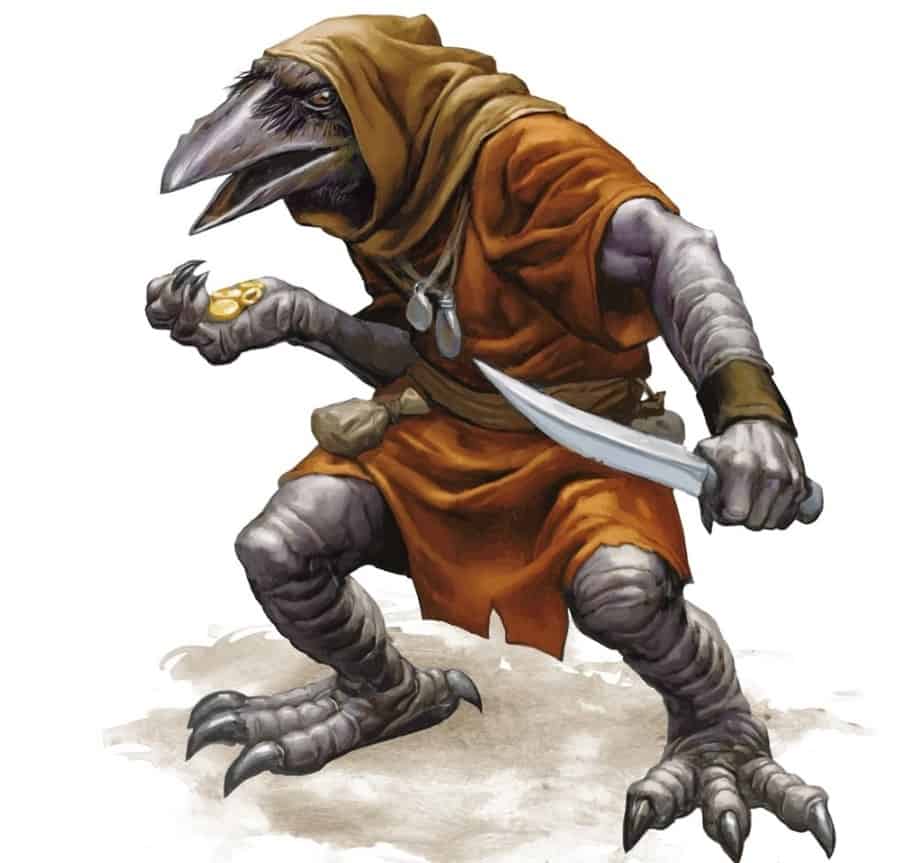
Book: Mordenkainen Presents: Monsters of the Multiverse
This race works particularly well if you build your Phantom Rogue to cover as much skill utility as possible. It gives you two additional skills and grants you Kenku Recall, which is excellent for ensuring your most essential skill checks succeed.
Kobold
Book: Mordenkainen Presents: Monsters of the Multiverse
This race helps you get even more Sneak Attacks in by using its Draconic Cry feature, while Kobold Legacy gives you access to Booming Blade, which is one of the most potent spells for any melee-based Rogue.
Satyr

Book: Mystic Odysseys of Theros
This race is a solid choice because it increases your Dexterity and Charisma alongside two free skills and resistance to magic. These are useful for the Phantom Rogue, especially if you want to boost your Charisma to help out as the party’s Face.
Phantom Rogue Feats
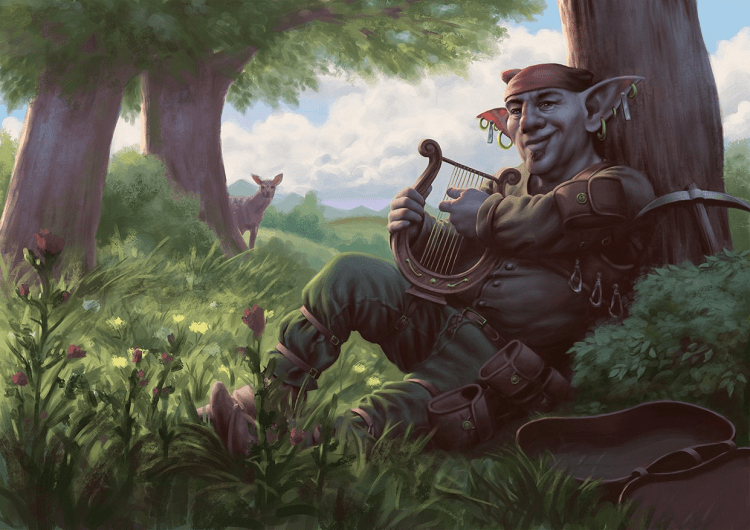
Taking feats allows players to customize their character, helping them further specialize their abilities. Some feats increase your ability scores, give you access to magic, or introduce entirely new mechanics for you to use. The best accomplishments that I recommend for the Phantom Rogue are these.
Alert
Book: Player’s Handbook
This feat helps buff your Initiative, helping you go first in battle, which is great for Rogues of all types, especially Phantom Rogues.
Dual Wielder
Book: Player’s Handbook
This feat is a bit tricky to use, as you shouldn’t use it for the extra damage or AC, but instead, use it to double the number of sneak attacks you can perform.
Dungeon Delver
Book: Player’s Handbook
If you are in a dungeon-heavy campaign, I cannot recommend this feat enough to help you navigate the dungeons and get the most out of your Rogue skills.
Mobile
Book: Player’s Handbook
This feat is great for Rogues and allows you to hit and run during battles. With this feat, you can run in by an enemy, strike them, and then dash away to safety to help you avoid taking damage. This makes this one particularly strong if you have a lower Constitution or AC.
Piercer
Book: Tasha’s Cauldron of Everything
This feat will come up frequently as a rogue because you are much more likely to roll low numbers with your sneak attack damage, allowing you to maximize your damage frequently.
Phantom Rogue Equipment
For your Phantom Rogue, there are some staple pieces of equipment that you’ll want to get your hands on. For your weapon, you’ll want to get either Daggers or Shortswords for dual-wielding or a Rapier if you want the one weapon, which I recommend so that you have a free hand to use Soul Trinkets.
You’ll start with Leather for your armor, but you should get your hands on Studded Leather as early as possible. Once you get Studded Leather, you won’t need to look for armor anymore and should look instead for magic replacements.
Speaking of magic items, here are some of the very best magic items in 5e for the Phantom Rogue.
Common Magic Items
Horn of Silent Alarm
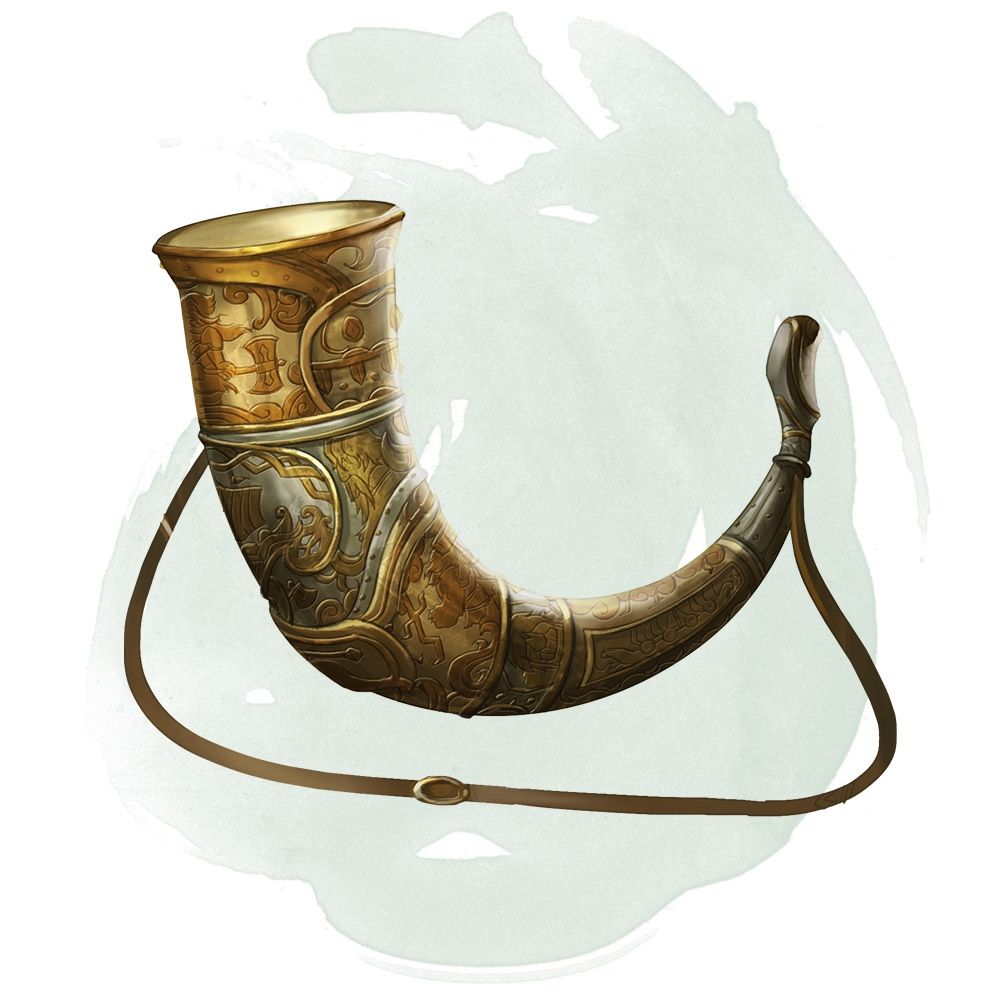
Book: Xanathar’s Guide to Everything
This is a great tool for scouts early in the game and allows them to send signals to their party in a simple but cheap method.
Masquerade Tattoo
Book: Tasha’s Cauldron of Everything
This solid magic item acts as a cheaper Hat of Disguises. It gives you one free use of Disguise Self each day, allowing you to infiltrate areas without having to burn a spell slot from one of your party members.
Uncommon Magic Items
Cloak of Elvenkind
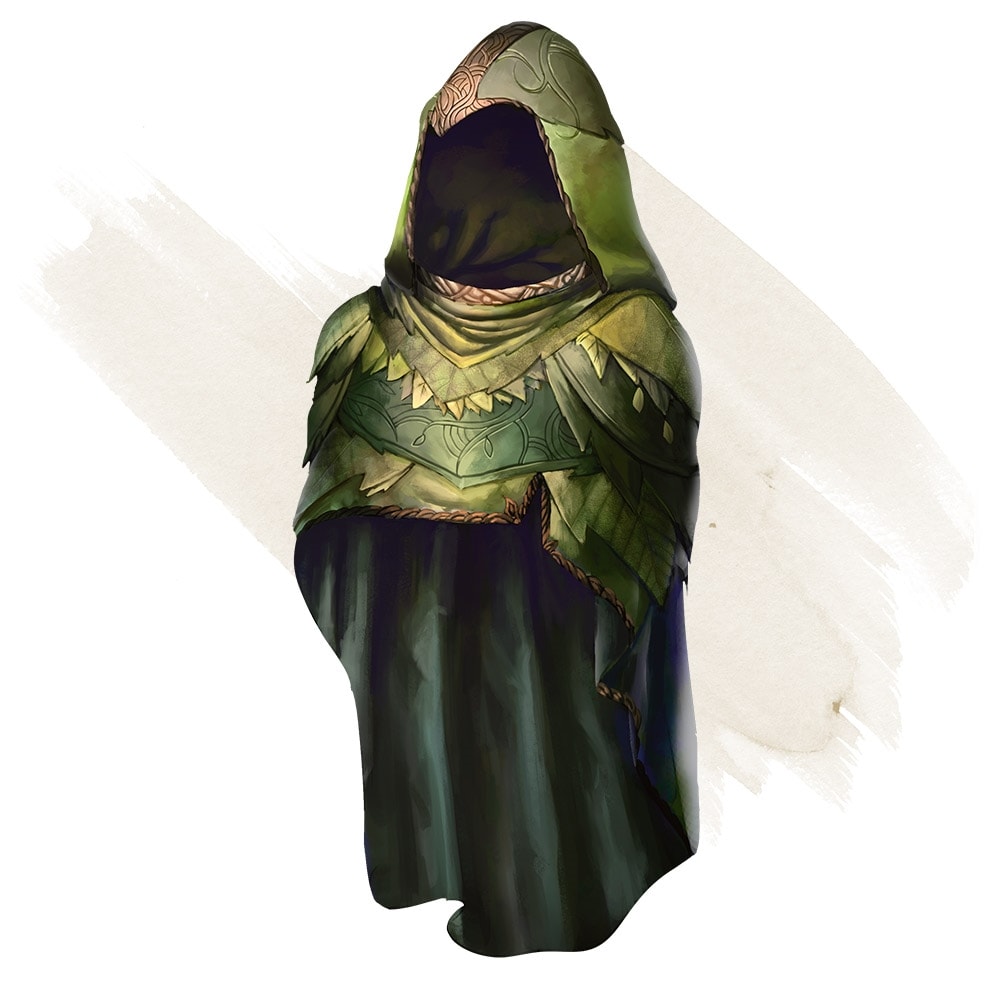
Book: Dungeon Master’s Guide
This is a must-have for stealth-based characters. It will give you advantage on Stealth checks against vision and gives enemy creatures disadvantage if they try to spot you.
Eyes of the Eagle
Book: Dungeon Master’s Guide
If you are paranoid about enemies being able to sneak up on you, this is the magic item for you. If you pair this with proficiency and Expertise in Perception, you will never have to worry about not knowing when an enemy is nearby.
Slippers of Spider Climbing
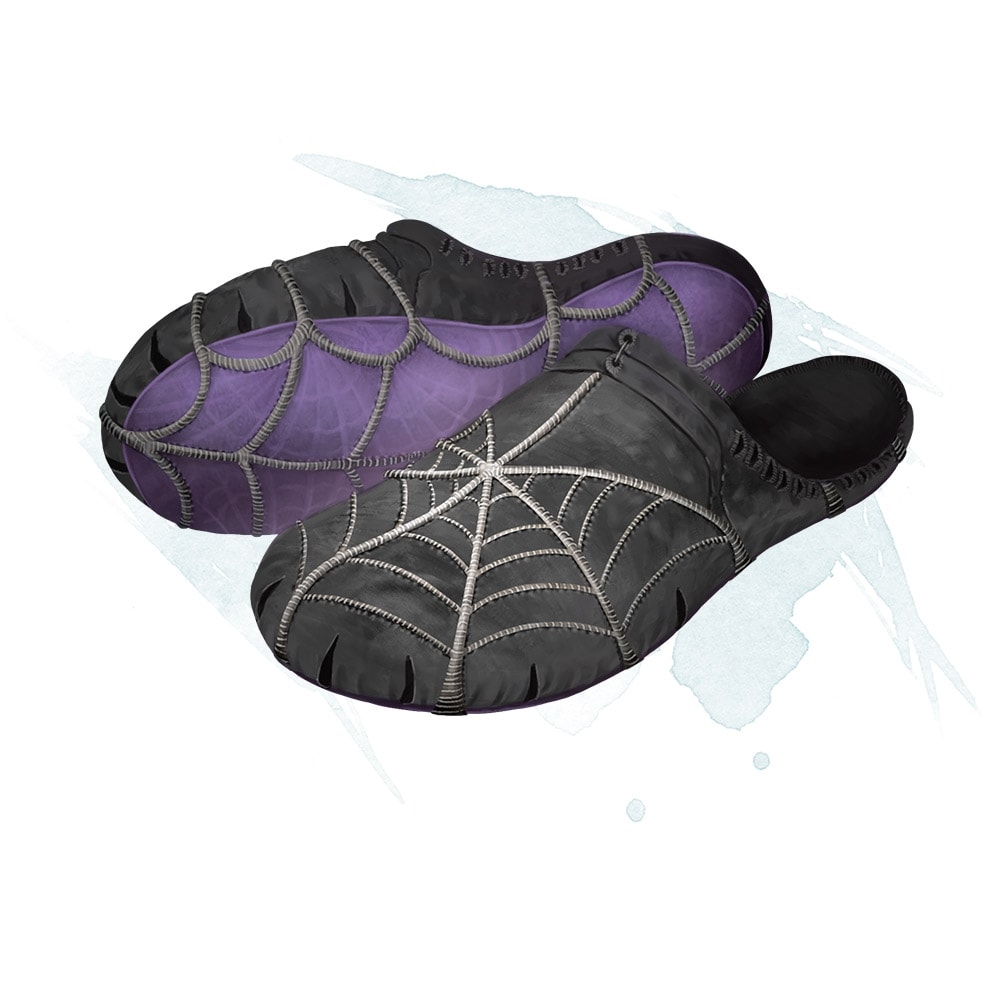
Book: Dungeon Master’s Guide
These slippers allow you to easily walk on any surface, preventing you from having to roll checks to climb up the wall. It also gives you plenty of new opportunities for stealth, such as being on the ceiling in the dark.
Rare Magic Items
Amulet of Health
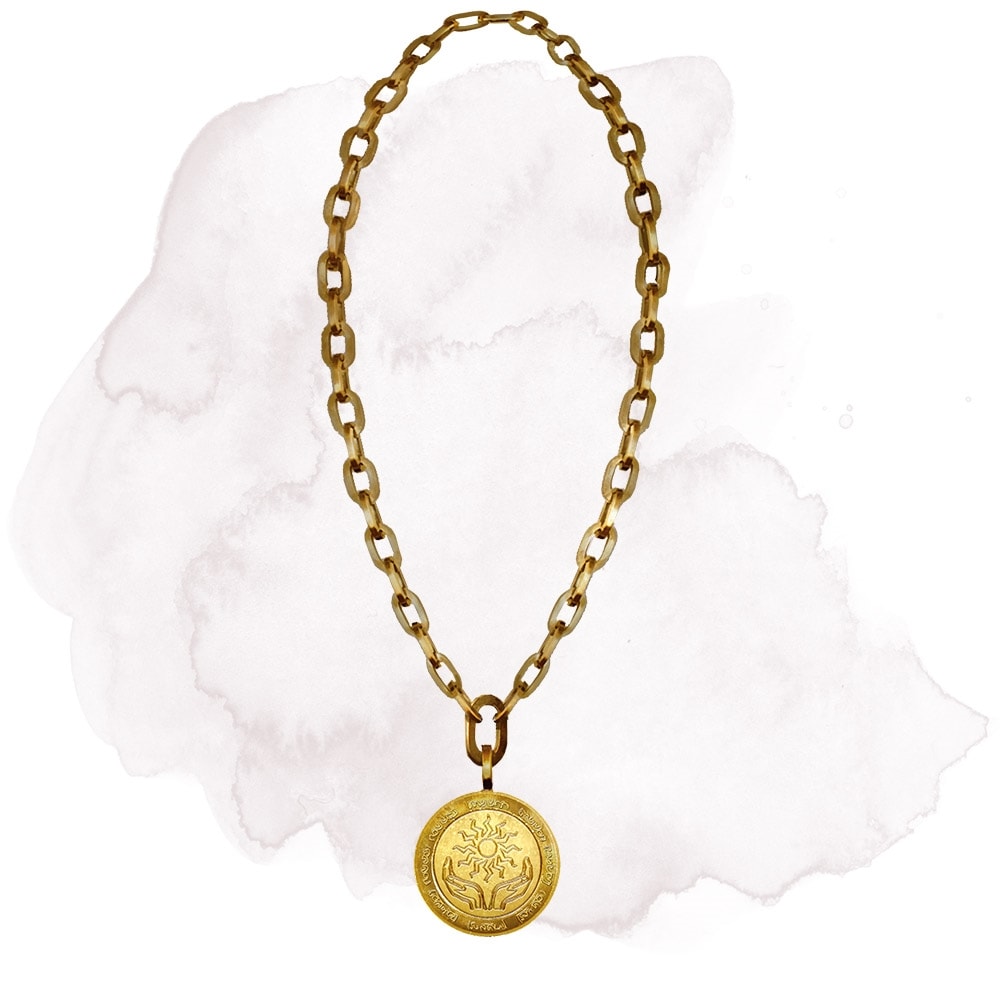
Book: Dungeon Master’s Guide
This item sets your Constitution to 19, which may be more useful for another character in your party. However, suppose you can get it early in your campaign. In that case, it will save you from investing ability points into your Constitution, allowing you to get more of the above feats to improve your character in other ways.
Sword of Wounding
Book: Dungeon Master’s Guide
While the Sword of Wounding does not deal as much damage outright as a +2 weapon, it can be very useful for chipping away at the health of enemies that take a while to kill. This is because it deals an additional stacking 1d4 damage per turn, allowing you to stack up the damage over time.
Very Rare Magic Items
Manual of Quickness of Action
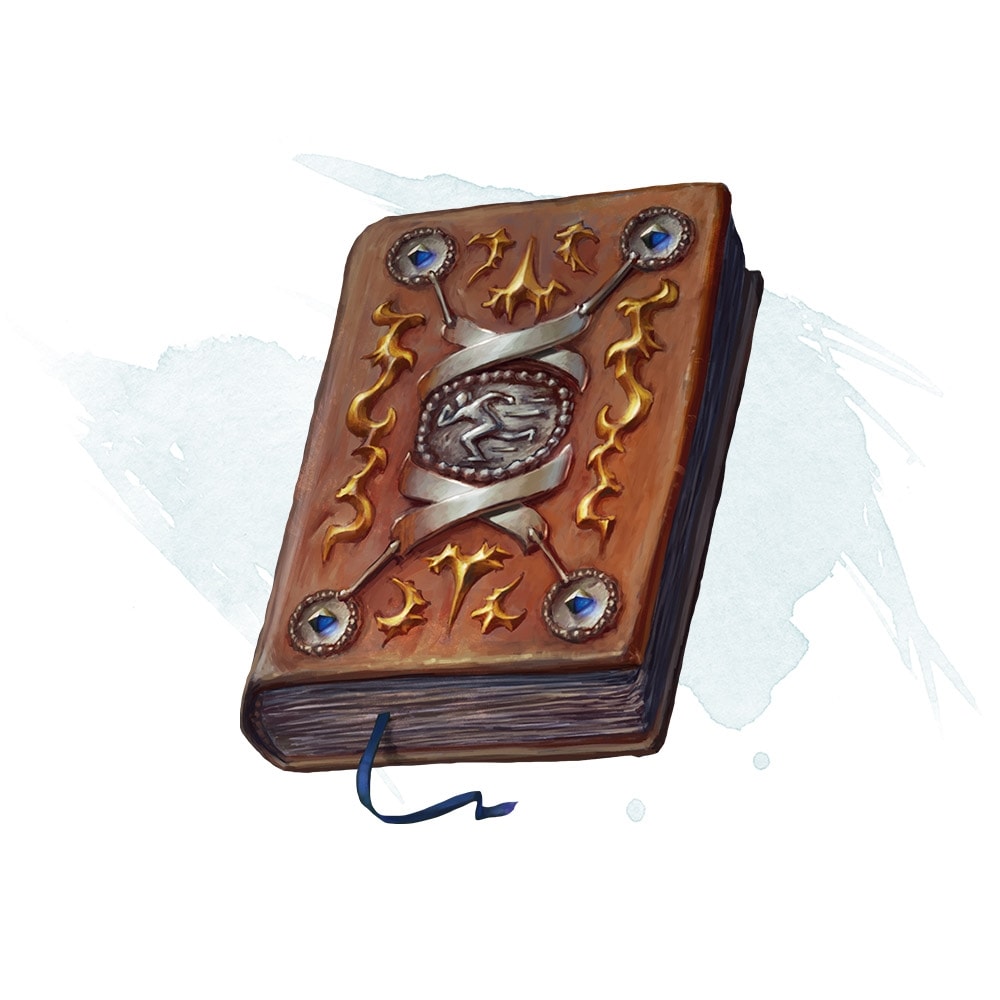
Book: Dungeon Master’s Guide
This item is one of the most broadly impactful for any Rogue. It increases their Dexterity and even bumps up their maximum by two, allowing them to get a +6 Dexterity modifier.
Legendary Magic Items
Blood Fury Tattoo
Book: Tasha’s Cauldron of Everything
This tattoo comes with various benefits for your Phantom Rogue. Not only does it give you bonus damage that also heals you, but its damage counts as bonus damage that is doubled by critical hits.
The tattoo also gives you a counterattack using your reaction that has advantage, which means you can add your sneak attack damage onto it for some serious off-turn damage.
Cloak of Invisibility
Book: Dungeon Master’s Guide
If you’re going to be sneaking a lot, being invisible is a huge help.
Ioun Stone (Mastery)
Book: Dungeon Master’s Guide
This stone gives you a +1 bonus to your proficiency bonus. This can be huge for Rogues because of their many skills and their Expertise, effectively doubling that +1 to +2 to the most important of their skills.
How to Play a Phantom Rogue
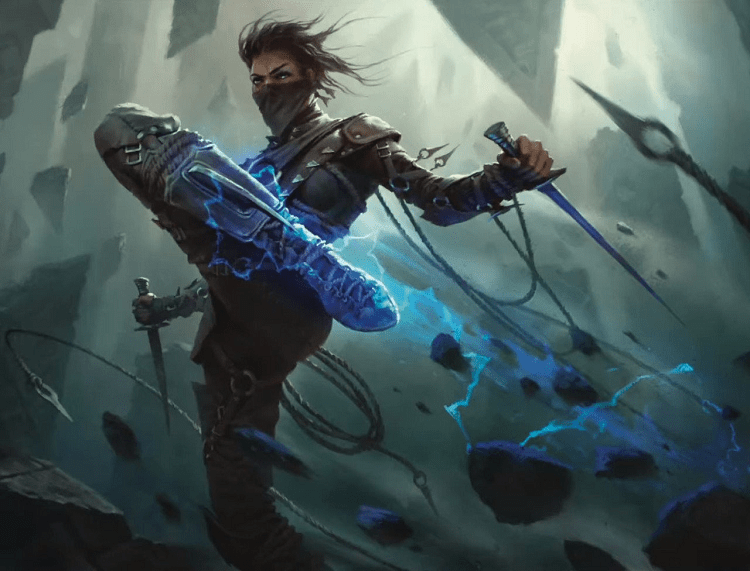
Roleplaying
When roleplaying a Phantom Rogue, you should make an effort to have your character have a unique view of the dead. I like to run it as them not seeing death as the end because they know that people become spirits afterward.
I think it also helps to establish how your character came to have such a connection with the dead because it is a very unusual ability to have in the Forgotten Realms. You can take numerous approaches for this, and I recommend incorporating your character’s backstory and selected background to make it fit as well into their character as possible.
For this, you should also talk to your Dungeon Master to find what works well within the setting and your character’s history. You can then use that to influence how your character views death and their connection to it, as well as their personality.
However, your character’s connection to death may make some other characters uncomfortable, which you should incorporate into your interactions and whether or not you’re willing to use some of your abilities in front of others.
Depending on your choices with your build, you should also focus on using your proficient skills to their utmost ability, whether acting as the party’s Face, scouting ahead, or gathering information.
This will help give your character ways to have interactions and usefulness outside of combat, which will help flesh them out and help your entire party. You should also try to capture the spirits of important characters since you’ll never know when being able to ask them a question will help you move the plot along.
Combat
The Phantom Rogue class shines when your character gets into combat. At the very start of combat, or if right before it, you should try to get a surprise attack to start things off and shell out as much damage in one burst as possible.
After doing that, you should try and get advantage on your attacks as frequently as possible to keep rolling extra damage dice.
To do this, you can use your Cunning Action to move around the battlefield without incurring extra damage from attacks of opportunity. You can also use it to cover great distances and take down the most vulnerable targets like casters and ranged attackers.
Since you can cover so much ground in a single turn, you can take out these high-value targets to remove them from encounter as quickly as possible and keep them from being as influential in the battle as possible.
FAQs
Question: Is Phantom Rogue Good?
Answer: Phantom Rogue is a unique and solid class to play in 5e, but you may want to go with a different subclass if your game isn’t planning on reaching levels nine or higher.
Question: What is a Phantom Rogue in DnD?
Answer: The Phantom Rogue is a Rogue that has a connection with death to draw power from nearby spirits to augment their abilities and strengthen themselves.
Question: What 5e Book is the Phantom Rogue in?
Answer: The Phantom Rogue is part of Tasha’s Cauldron of Everything.
- Steel Defender 5e Guide - September 5, 2022
- Harengon 5e Guide - August 24, 2022
- Shambling Mound 5e Guide: The Most Terrifying Plant - August 21, 2022

